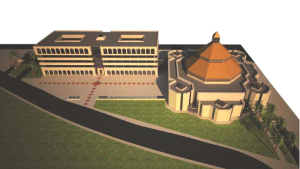A Christian monastery probably built before Islam spread throughout the region has been discovered on an island off the coast of the United Arab Emirates, officials announced Thursday, shedding new light on the history of early Christianity on the shores of the Persian Gulf.
As Jon Gambrell reports for the Washington Post, the monastery found on Siniyah Island is the second monastery discovered in the Emirates dating back at least 1,400 years. Both monasteries were eventually abandoned as, scholars assume, the local population gradually converted to Islam, as it became more and more prevalent in the region.
The finding, although noteworthy, is not a rarity. Early churches and monasteries spread along the Persian Gulf to the coasts of present-day Oman, all the way to India. In fact, archaeologists have found other similar churches and monasteries in Bahrain, Iraq, Iran, Kuwait and Saudi Arabia.
The floor plan of the monastery shows a single-aisle church, a baptismal font, and an oven for baking bread, probably for communion. A nave also likely held an altar and an installation for communion wine. Next to the monastery, a second building includes four rooms, distributed around what seems to be a courtyard.
Archaeologist Timothy Power, an associate professor at the United Arab Emirates University who helped investigate the newly discovered monastery, describes the finding as “really remarkable,” and as “a story that deserves to be told.”
Gambrell’s article also explains carbon dating of samples found in the monastery’s foundation date between 534 and 656. Islam’s Prophet, Muhammad, was born around 570 and died in 632, after conquering Mecca in present-day Saudi Arabia.
You can read the whole article here.


